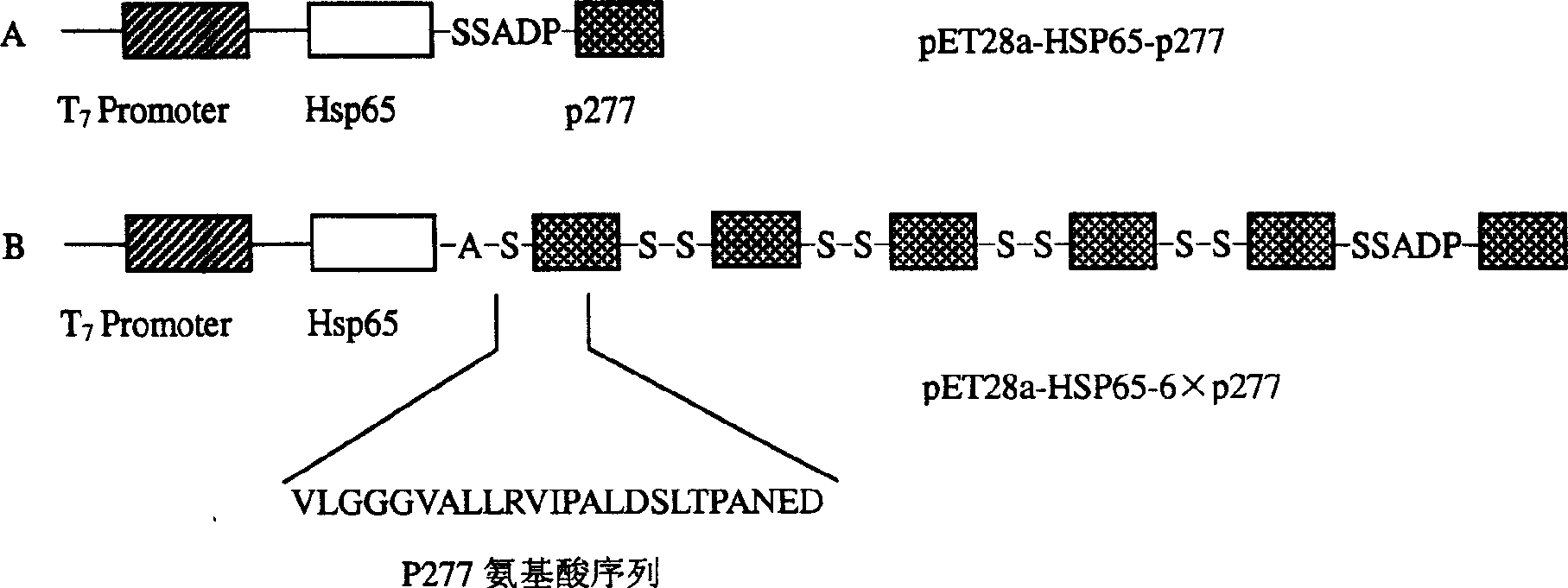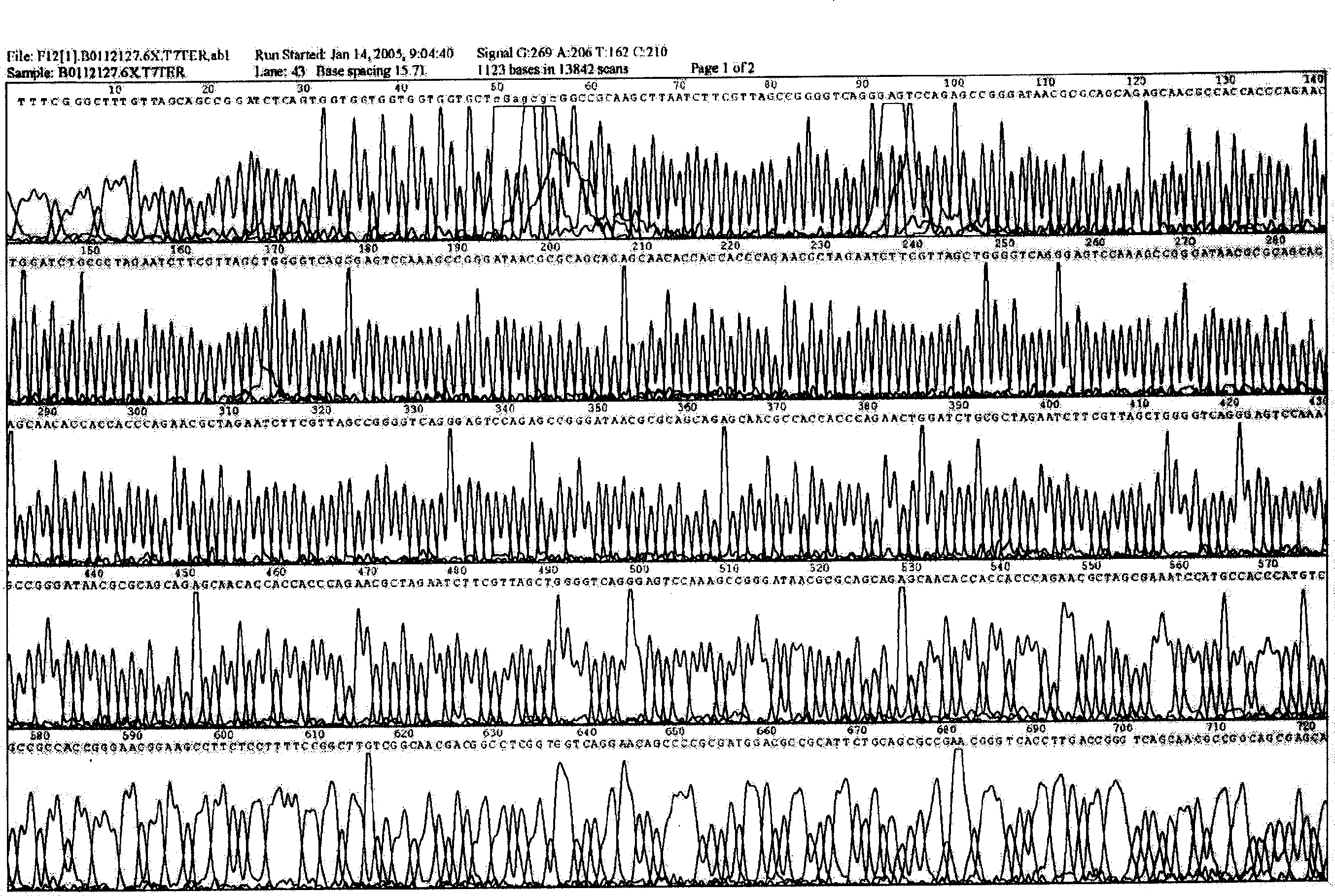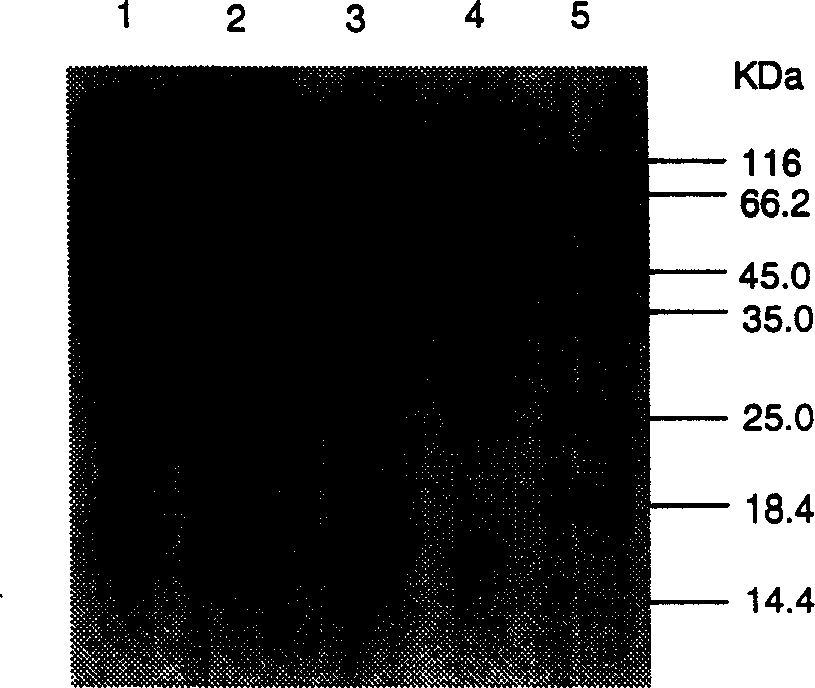Immunological adjuvant with immunity vegulating agent for treating and preventing diabetic from insulin-dependent
An immunomodulator, human insulin technology, applied in DNA recombination technology, protein separation and purification technology and medical related fields, can solve the problems that polypeptide vaccines cannot enhance immunogenicity and cannot be used in human body
- Summary
- Abstract
- Description
- Claims
- Application Information
AI Technical Summary
Problems solved by technology
Method used
Image
Examples
Embodiment 1
[0058] Embodiment 1: Design, synthesis and cloning of HSP65-6×p277 polypeptide gene
[0059] According to the amino acid sequence of MT-HSP65 gene and p277 polypeptide gene, the preferred codons of Escherichia coli were selected, and 6 oligonucleotide fragments were designed with the aid of computer. First, the p277 polypeptide gene was synthesized by PCR method, the gene was cloned into the C-terminus of the L-ansB-C gene of pED, and transformed into Escherichia coli to obtain a recombinant plasmid named pED-p277. Using the pET28a-HSP65 plasmid as a template, the MT-HSP65 gene was obtained by PCR, and the gene was replaced by the L-ansB-C gene in pED-p277, and transformed into Escherichia coli to obtain a recombinant plasmid named pED-HSP65-p277. The p277 gene was cloned repeatedly to obtain the recombinant plasmid pED-HSP65-2×p277; the p277 gene was cloned repeatedly until the recombinant plasmid pED-HSP65-6×p277 was obtained. The specific method is as follows:
[0060] 6 ...
Embodiment 2
[0070] Embodiment 2: Expression of HSP65-6×p277 gene in Escherichia coli
[0071] The recombinant plasmid pED-HSP65-6×p277 was transformed into Escherichia coli BL21. Pick single bacterium colony and inoculate containing 50ug / ml kanamycin LB liquid culture medium from growing different transformant plates, cultivate overnight at 37 DEG C of constant temperature shaking, transfer and inoculate into fresh corn steep liquor liquid culture medium by 1% ratio ( 50ug / ml kanamycin), after culturing at 37°C for 4 hours, adding α-lactose at a final concentration of 0.5mmol / L to induce Escherichia coli to express T7 RNA polymerase, and continue culturing to express the fusion protein HSP65-6×p277. After induction, a small amount of bacterial liquid was taken every 1 hour, and the bacterial cells were recovered by centrifugation. SDS-PAGE electrophoresis and thin-layer scanning showed that the fusion expression of the HSP65-6×p277 polypeptide gene had been realized. The fusion protein r...
Embodiment 3
[0072] Example 3: Separation and purification of recombinant protein HSP65-6×p277
[0073] The engineered bacteria after induced expression were collected by centrifugation, suspended in the cell lysate (pH 8.0, 50mM phosphate buffer, 0.02% lysozyme), stirred at 37°C for 30 minutes, and DNase was added to digest the DNA Until the solution is not viscous, centrifuge to recover the supernatant, and use sulfuric acid to precipitate according to grades. The target protein is mainly in the 35%-45% sulfuric acid precipitate. Redissolve the precipitated fusion protein in pH 6.8 phosphate buffer, dialyze and desalt, and take the supernatant after centrifugation for anion exchange column chromatography, DEAE cellulose DE-52 column (2 × 60cm), using PB / NaCI gradient Elution, collected in sections for SDS-PAGE electrophoresis detection, HSP65-6×p277 in the elution peak at 120-150mmol NaCI, use SDS-PAGE electrophoresis to check the purity of the prepared sample, see Figure 4 . HSP65-1×...
PUM
 Login to View More
Login to View More Abstract
Description
Claims
Application Information
 Login to View More
Login to View More - R&D
- Intellectual Property
- Life Sciences
- Materials
- Tech Scout
- Unparalleled Data Quality
- Higher Quality Content
- 60% Fewer Hallucinations
Browse by: Latest US Patents, China's latest patents, Technical Efficacy Thesaurus, Application Domain, Technology Topic, Popular Technical Reports.
© 2025 PatSnap. All rights reserved.Legal|Privacy policy|Modern Slavery Act Transparency Statement|Sitemap|About US| Contact US: help@patsnap.com



